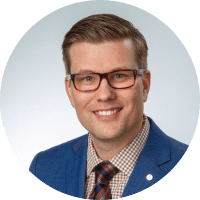We offer medical detox and multiple addiction treatment options in our
luxury treatment centres in Port Hope, Cobourg, and Ottawa.
When One Is Not Enough: The Menace Of Doctor Shopping
When people mention shopping addicts or shopaholics, they usually refer to those who compulsively buy products or services, never doctors. But there is such a thing as ‘doctor shopping’. Sadly, there is not yet any equivalent addiction treatment program, like Shopaholics Anonymous, for this type of addictive behavior.
What is doctor shopping?
Also known as ‘double doctoring’, this phenomenon of many themes is the practice of seeing multiple treatment providers simultaneously for the same medical condition in a single period. It is a key indicator of prescription drug abuse and illegal distribution of addictive drugs. It is one of the biggest contributors to the heroin and opioid addiction epidemic in the United States.
Clinicians vary on their definitions. Macpherson et al [1] define it as “patient contact with three or more care sites during a single illness”. Lo et al [2] interpret it as “changing doctors without a healthcare professional referral during the same illness”. But all definitions agree on the same thing: one patient sees many physicians.
Other terms associated with the activity are ‘physician switching’ and ‘second-opinion patients’. Although some double doctoring activities, which include ‘dentist shopping’, arise from legitimate reasons, most are not done innocently. Many who ‘shop for multiple doctors’ do so with suspicious intent.
Why do people do it?
There are two dimensions to patient motivation. The dark side sees unscrupulous patients obtaining prescription medications illegally—especially controlled substances—either for themselves or for others. Some doctor shoppers are genuinely benevolent. They want to share their medications with impoverished family members and friends or to help those who are not covered by insurance. Others who are less altruistic, though, do it to sustain a drug habit or for profit. These are the drug abusers/misusers and dealers.
Doctors Randy and Lori Sansone, in their report on doctor shopping published in Innovations in Clinical Neuroscience, affirm that not all doctor shoppers are driven by suspicious motivations. Both doctors categorize patient justifications for doctor shopping:
- Clinician factors: patients are dissatisfied with the doctor, medical centre hours or locations are inconvenient, long wait times vis-à-vis communication in a short period time between doctor and patient.
- Factors relating to illness: long-term disease, patients are dissatisfied because symptoms do not subside even after the use of medication, lack of understanding or non-acceptance of a diagnosis, medical opinion, or treatment, and comorbidities (two chronic diseases simultaneously present in one patient).
- Psychological factors: intentional searching for prescription drugs (because of substance abuse or dependence), younger age, somatization (the creation of recurrent and multiple medical symptoms with no perceptible organic cause).
Types of doctor shoppers
Doctor shoppers are divided into two groups: opioid users, and registered patients of general and primary clinics. Both groups share the same risk factors.
Characteristics of doctor shoppers
Similarities among doctor shoppers include having mental health disorders, alcohol dependence, and a history of alcohol and active substance misuse disorders. They are younger and come from a lower socioeconomic background, especially opioid users.
It is important to know the characteristics of doctor shoppers, in order to identify them early and prevent their practice of doctor shopping.
Doctor shopper statistics
Referring to the studies below done in different countries, the doctors Sansone claimed that “prevalence rates of doctor shopping vary widely, from 6.3 to 56%”. In Taiwan, Wang and Lin [3] reported a doctor shopping rate of 6.3% in patients with upper respiratory tract infections. In Canada, MacPherson et al [1] confirmed a rate of 18% in patients visiting three or more different care sites for a single illness episode. In Japan, Sato et al [4] reported 23% out of 1,088 participants who acknowledged doctor shopping.
Another multi-country study done in March 2019 by Biernikiewicz et al [5] on the prevalence of doctor shopping revealed rates of “0.5% among opioid users in the USA to 25% of patients registered at general practices in Japan”. The study was also conducted in France, Taiwan, and Hong Kong.
A 2013 study identified an extreme group of 135,000 suspected doctor shoppers who bought 11.1 million grams of opioids over a 10-month period. According to the National Institute on Drug Abuse (NIDA) which cited the study, this is equivalent to “109 milligrams of morphine per day for an entire year”. This amount can lead to overdose.
The Centers for Medicare & Medicaid Services (CMS) cited a September 2009 report by the US Government Accountability Office (GAO) related to controlled substance fraud in Medicaid programs in five states. “Thousands of Medicaid beneficiaries and providers were involved in potentially fraudulent or abusive purchases of controlled substances through Medicaid programs. Their doctor shopping resulted in $63 million in Medicaid payments for prescriptions alone. Prescriptions were filled for more than 1,800 deceased beneficiaries. The GAO also found that Medicaid paid more than $2 million in 2006 and 2007 for prescriptions for controlled substances written or filled by 65 providers barred or excluded from federal health care programs.”
What is considered illegal?
According to Adams & Luka, a law firm, it is illegal throughout the US to possess a controlled substance without a prescription. In Florida, keeping a blank physician’s prescription form or pad is illegal, even if the possessor has not used it to obtain medication. The same applies to placing a forged label on a container with controlled substances. Obtaining prescriptions for controlled substances, or attempting to do so by making false statements or misrepresentations, committing fraud or forgery, or lying to (or withholding information from) doctors, are all illegal acts. They are considered third-degree felonies punishable by up to five years in prison and a $5,000 fine.
Where do doctor shoppers get supplies?
Studies like the National Survey on Drug Use and Health (NSDUH) reveal that only a small percentage of non-medical prescription opioid users get their drugs from multiple doctors, or from a dealer, friend, or acquaintance. These supply sources are much more common among a certain number of people suffering from substance use disorders.
The Survey of Key Informants’ Patients (SKIP) reveals that more than 60% of prescription opioid users mainly get their medications from dealers. Others steal the drugs or get them from doctors.
Where do dealers get supplies?
According to a 2012 report by Rigg et al [6], drug acquisition by dealers is an offshoot of physicians’ interconnections with pharmacies and patients. Any location that stores a drug inventory is a target for theft. These include pharmacies, pain clinics, and other dispensaries. Some dealers ‘sponsor’ doctor shoppers by paying for their medical costs. These people deliberately transact with different doctors and different pharmacies for the purpose of hoarding drugs.
Negative consequences of doctor shopping
The practice disrupts continuity of care by healthcare systems, contributes to drug addiction, including opioid abuse and misuse, greatly increases medical costs, and encourages polypharmacy (the simultaneous use of multiple drugs by a single patient for one or more conditions). The worst effects of double doctoring are drug addictions and overdose deaths.
Negative consequences of the restriction on doctor shopping
Concerns about drug and healthcare resource misuse may prevent appropriate disease management. Legitimate physician switchers and second-opinion patients may suffer or be denied treatment because of discrimination or suspicion.
What is drug diversion?
Compulsive shopping for doctors is a mechanism of drug diversion, which means illegal distribution or abuse of prescription drugs. Officials have difficulty pinpointing when diversion happens because of the long trail from manufacturer to distributor to pharmacy to the patient.
Types of drug diversion
The most common include drug theft, illegal prescription, prescription pad theft and forgery, patient diversion, double doctoring, and illicit online pharmacies.
Which drugs are usually diverted?
According to the US Drug Enforcement Administration (DEA), the Centers for Disease Control and Prevention (CDC), and the CMS, the drugs most often rerouted fall into five categories:
- Anabolic steroids: methyltestosterone, testosterone
- Central nervous system depressants: barbiturates (pentobarbital) and benzodiazepines (alprazolam, diazepam)
- Hallucinogens: ketamine
- Opioids: diphenoxylate, fentanyl, hydrocodone, hydromorphone, meperidine, methadone, morphine, oxycodone, oxymorphone
- Stimulants: amphetamine, dextroamphetamine, methamphetamine, methylphenidate
Negative effects of drug diversion
As with doctor shopping, adverse effects include substance abuse, prescription drug addictions, overdoses, drug-related emergency room visits or treatment admissions, and death.
Ways to prevent diversion of drugs
Healthcare providers may or may not be aware that they have become part of prescription drug diversion activities. Some patients take advantage of the system or their doctors. Precautions are not always checked or implemented, and so authorities have launched preventative measures, which include:
- Social network analysis: Indiana University researchers study doctor shopping by using advanced computational and statistical methods to develop better ways of identifying doctor shoppers and their targeted physicians.
- Affordable Care Act: This health care reform brought changes to Medicaid, Medicare, and other healthcare programs in the US. This means stricter penalties for submitting false information when ordering or prescribing medication. Fraudulently attempting to get a controlled substance is a felony in most states. Violators will be punished with jail time and fines.
- Prescription Drug Monitoring Program (PDMP): This is an electronic database that tracks controlled substance prescriptions in a state. It collects, monitors, and analyzes electronic data from pharmacies and dispensing practitioners. Government officials use it to reduce prescription drug abuse and diversion. As of September 2019, 49 states, the District of Columbia, and US territory Guam have PDMPs. These collect data from dispensers and report information from the database to authorized users.
- Prescription Behavior Surveillance System (PBSS): This is an early warning monitoring system and evaluation tool that measures trends in the prescription and dispensation of controlled substances. It also monitors medical use and possible non-medical prescription drug abuse and diversion.
- Prescribing principles: Inside the clinic, medical practitioners and their staff should be stricter on where they store prescription pads and who is allowed access to these (including family members). There were cases where doctors’ prescription pads have been stolen by their own teen or adult children. These were used to procure drugs for their friends and unrelated beneficiaries, including seniors.
Likewise, pharmacies and clinics that specialize in pain management, or other venues that maintain a supply of prescription opioids, are vulnerable to robbery. Theft can be committed, not just by outsiders, but also by employees and their family members. Therefore, managers of these facilities should enforce strict security measures and dispensation methods. They should monitor any staff member who has direct access to drugs.
Prescribers should also impose stringent refill policies and prescribing principles for narcotics, opioids, and other controlled substances. Staff should be diligent in documenting all prescriptions.
CMS suggests these clinical practices for physicians to avoid being taken advantage of by unscrupulous patients:
- Make sure patients really need medications (especially prescription painkillers and tranquilizers) by evaluating and assessing medical history and disposition.
- Before prescribing, refilling, or adding new medications (especially opioid painkillers), use PDMPs to check patient history.
- Screen for substance abuse disorders and withdrawal symptoms. Determine the patient’s current medications and their purpose.
- Dispense opioids as a last resort, only when other therapies don’t work.
- Monitor controlled substances with pain assessment tools.
- If the patient’s condition doesn’t improve significantly and chronic pain relief is unsuccessful even with more than 120 mg morphine equivalents or other opioid derivative Schedule II drugs, refer them to a pain specialist or appropriate consultant.
- Be wary of patients who ask for drug combinations for intensified effects.
- Be strict with documentation when prescribing narcotics. If in doubt, do not prescribe.
- Keep a DEA or license number confidential unless otherwise required by law.
- Make sure prescriptions are written clearly to prevent forgery.
- Use electronic instead of paper prescriptions.
- Ask patients to return ineffective unused narcotics.
- Send patients with complicated pain management or prescription needs to specialists.
- Collaborate with pharmacists, pharmacy benefit managers, managed care planners, and other providers when suspicious behaviours are discovered. Communication is also vital in determining if a patient’s prescription for controlled substances is really needed.
What to do when drug diversion is discovered
Prescribers who suspect drug diversion can document and report it to the US Department of Health and Human Services, the Office of the Inspector General, local law enforcement, or local fraud alert networks. For controlled substance theft or loss, notify the DEA.
Self-prescription
Despite guidelines, it is common for doctors—particularly those in training—to prescribe medicine for themselves. Major factors in self-prescription by interns are their limited clinical experience and exposure to high-stress work environments.
A 1998 study by Christie et al [7] revealed that 52% of residents self-prescribed during training: “The most common sources of self-prescribed medications were sample cabinets (42%) and pharmaceutical representatives (11%).” Relationships between residency programs and pharmaceutical companies have changed a lot since then, but self-prescription continues to be widespread.
Dr. Ajit Limaye from the University of Washington in Seattle confirmed this, despite a 2012 study that says fewer doctor residents self-prescribed compared to 10 years earlier. Less than 1% of residents surveyed said they wrote themselves a prescription for an allergy medication, antidepressant, or another drug in a year.
Prior to 2012, Dr. Constance Guille from the Medical University of South Carolina in Charleston and Dr. Srijan Sen from the University of Michigan in Ann Arbor [8] surveyed residents at 16 US medical centers during the academic years 2009-2010 and 2010-2011. Their study was published in the Archives of Internal Medicine. Out of the 1,300 doctors-in-training who completed the survey, only 11 self-prescribed. Most of the residents said they got the drugs from a personal doctor or a colleague.
Researchers attribute the drop in self-prescription partly to new restrictions limiting interaction between pharmaceutical company representatives and doctors-in-training. Dr. Guille suggested another explanation—a 2003 rule that moderated residents’ workloads. This gave them more time after work for appointments with their own doctors or therapists.
It is not illegal for doctors to self-prescribe most types of medication (with the exception of controlled substances), but the American Medical Association discourages it. Many medical practitioners consider it ethically questionable.
It depends on the situation, though. Dr. Limaye explains, “It’s one thing to write yourself a refill for blood pressure medication you’ve been on for years when your doctor is unavailable, for example, and another to put yourself on anti-anxiety medication without consulting another physician.”
So has doctor shopping been curbed?
Some government efforts to reduce opioid prescription diversion have been successful. But there will always be cunning dealers who will find ways to beat the system by recruiting more ‘patients’ to collect illicit prescriptions.
The focus then, should be on organized crime. One example was a New York physician turned drug-ring leader who was charged in August 2010 for allegedly prescribing oxycodone (OxyContin and Percocet) to patients who didn’t need it, and then sold the drug to third parties [9].
Officials should also pay attention to substitution across drugs, as well as chronic non-medical opioid users who switched to illicit drugs because they’re easier to get.
Clinicians have started to deal with these problems by launching programs on public education, substituting opioid drugs with less harmful substances, and using opioid antagonists (antidotes against opioid overdose). These are satisfactory prevention methods. But earlier detection of, and intervention in drug abuse is preferable.
Sources used for the article
- [1] Macpherson AK, Kramer MS, Ducharme FM, Yang H, Belanger FP. “Doctor shopping before and after a visit to a paediatric emergency department”. Paediatric Child Health, 6:341-346. 2001.
- [2] Lo AY, Hedley AJ, Pei GK, et al. “Doctor-shopping in Hong Kong: implications for quality of care”. International Journal of Quality Health Care, 6:371–381. 1994.
- [3] Wang MJ, Lin SP. “Study on doctor shopping behavior: insight from patients with upper respiratory tract infection in Taiwan”. Health Policy, 94:61–67. 2010.
- [4] Sato T, Takeichi M, Shirahama M, Fukui T, Gude JK. “Doctor-shopping patients and users of alternative medicine among Japanese primary care patients”. General Hospital Psychiatry, 17:115–125. 1995.
- [5] Biernikiewicz et al. “Characteristics of doctor-shoppers: a systematic literature review”. Journal of Market Access & Health Policy, vol. 7, 1595953. 2019.
- [6] Rigg KK, Kurtz SP, Surrett HL. “Patterns of prescription medication diversion among drug dealers”. Drugs (Abingdon England), 19:144–155. 2012.
- [7] Christie JD, Rosen IM, Bellini LM, et al. “Prescription drug use and self-prescription among resident physicians”. JAMA, 280(14):1253-1255. 1998.
- [8] Guille, Constance and Sen, Srijan. “Prescription Drug Use and Self-prescription Among Training Physicians”. Archives of Internal Medicine, 172(4):371-2. February 2012.
- [9] US Attorney Southern District of New York. “Manhattan US Attorney Charges Nine Members of Oxycodone Distribution Ring”. August 12, 2010.
- Photo credit: Stock Catalog. This picture has a Creative Commons attribution license.





